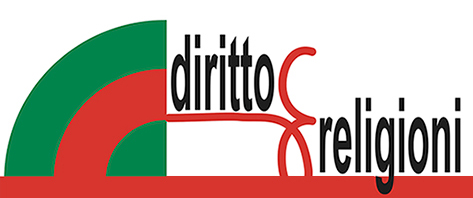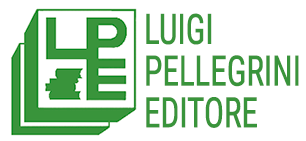(2 September 2024)
The Jubilee of 2025[1] is particularly anticipated as it marks the first ordinary Jubilee of the third millennium. The theme chosen for this edition - “Pilgrims of Hope” - reflects a desire for rebirth and optimism in an age marked by global challenges, including environmental crises, social conflicts and pandemics.
The event, as highlighted by Pope Francis[2] , presents itself as an extraordinary opportunity for Catholics to renew their faith, reflect on contemporary challenges and find new hope for the future through a journey of pilgrimage and reconciliation.
The Jubilee of 2025, however, does not end with a religious and spiritual event of great importance, but also represents a very significant economic phenomenon, with significant impacts on the economy of Rome, Italy and, to a lesser extent, the other countries involved.
First, it should be pointed out that the Jubilee will attract tens of millions of pilgrims and tourists to Rome, generating a significant increase in tourism that translates into revenue growth for the hotel, restaurant, transportation and local trade sectors.
Still, the Jubilee requires enormous infrastructural preparation involving significant investments in upgrading and improving roads, public transportation, historic buildings, and public spaces. Such investments not only improve the city's ability to handle the influx of visitors during the event, but also leave a lasting legacy for the city of Rome, improving the quality of life for residents and the city's attractiveness for future tourists.
Jubilee-related redevelopment projects and activities also create numerous jobs, both temporary and permanent, in the construction, service, and tourism sectors. This has a positive impact on the local economy and reduces unemployment.
The Jubilee also provides an international showcase for Rome, promoting the city as a tourist and cultural destination. This can lead to increased tourism even after the event is over, with long-term economic benefits.
The plan of interventions for Jubilee 2025 also includes initiatives for environmental sustainability and social inclusion[3] , improving the quality of life for residents and making the city more attractive to visitors. These aspects contribute to a more sustainable and inclusive economy.
Finally, the Jubilee has attracted significant funding, with a budget of more than 1,335 million euros for planned works and interventions, as well as 110 million euros for operational coordination. There is no doubt that these funds stimulate the local economy and support numerous development projects.
However, it should be pointed out that the economic implications related to the Jubilee are not only positive: there are also numerous risks that may result.
There is a risk that some interventions are designed only to meet the temporary need of the event, without a long-term vision that considers the future needs of the city.
The temporary nature of many jobs generated could lead to post-event unemployment if adequate transition measures are not planned for the workers involved.
The increase in tourism could cause overcrowding and put pressure on the city's infrastructure, with possible negative effects on residents' quality of life.
Effective implementation of initiatives for environmental sustainability and social inclusion requires careful management and continuous monitoring. There is a risk that, without proper monitoring, the promises of sustainability and inclusion may not be fully realized.
It should be pointed out that the detailed program of actions related to the celebrations of the Jubilee of the Catholic Church 2025[4] was approved by the Prime Minister's Decree of June 11, 2024[5] , which also approved the proposed integration of the plan of actions[6] referred to in the Prime Minister's Decree of April 10, 2024.
The Detailed Plan of Interventions for Jubilee 2025 was developed through an institutional process initiated by Law 178 of December 30, 2020[7].
The Intervention Plan is a form of planning by objectives[8] , broken down by areas of intervention.
One of the objectives was pursued by providing in the plan a set of initiatives related to the Jubilee itineraries, constructed as a coherent system.
All the different types of intervention have also been systematized with reference to the significant territorial units in which they are located.
On the subject, reference to the four functions that characterize the action of public authorities in the field of economic activities: regulation, planning, control and promotion is required.
Of these, the promotion function comes into prominence above all; regulatory activity, on the other hand, has a circumscribed scope since routes are only identified as fields of action. As for the programming function, the plan of interventions confirmed the qualification of the itineraries as a coordinated system of interventions, with a dual value: both linear (as tourist-religious routes) and territorial (as one of the components of the complex of actions that covered each territorial area).
The control can have a twofold function: upstream there is the prior verification, by the competent Superintendence of the area, of the compatibility of interventions with the protection of cultural heritage; downstream there is the verification of the conformity of the interventions carried out with the funded project[9] .
Finally, the whole mechanism is aimed at organizing and promoting, among other areas, permanent tourist itineraries, intended to remain after the Jubilee.
Preliminary to the analysis of the articulation of the four functions is a reference to the scarce normative sources found in Italian positive law on the subject of cultural tourist itineraries.
To this end, the division of functions (administrative and legislative) between the state and the system of Autonomies should be recalled. In the field of tourism, they are now largely vested in the Regions (the State is left with only the administrative functions of general guidance and coordination).
Conversely, the protection of cultural assets is largely reserved for the state, while their management and enhancement as well as the promotion of cultural activities see the concurrence and prescribed cooperation between the state, regions and local authorities[10].
The state, which retains strong powers in the field of landscape and historical-artistic heritage, can only be given the role of “promoter of the promotion” of these initiatives: either by facilitating access to European funds, co-financing the projects, or ensuring a quick decision, by the relevant Superintendencies, on the compatibility of the uses envisaged in the itinerary projects with the strict protection of historical-artistic and architectural heritage or areas of landscape interest.
It should be added that itinerary projects are almost always prepared by private entities (foundations and cultural or tourism promotion associations), which are joined by local authorities.
We have, therefore, the concurrence of vertical subsidiarity (of regional-local powers with respect to the state) and horizontal subsidiarity (of private individuals with respect to administrative poker)[11].
In fact, the peculiarity of itinerary projects, in terms of their legal content, postulates the collaboration and interaction of public and private.
If the itinerary is, in itself, immaterial, vice versa, the project, in which the complex of activities aimed at realizing it is systematized, necessarily involves a series of activities - administrative and material - both of the promoter, and then the implementer, and of the numerous administrations involved.
In addition to the administrative activities - both purely legal, and ordered to interventions on the physical reality - are those put in place by the managing entities of the itineraries: the operational organization (visits, shows, etc.) of the routes; their commercialization, through appropriate communication action; the provision of products - handicrafts, publishing, agricultural - with the itinerary brand; the production of multimedia illustrative material; etc.
The references to the operational aspect of the projects make it clear that the implementation and operation of the routes involve the obligatory concurrence of multiple parties, administrative and private[12].
Ida D’Ambrosio
[1] It is the 27th Jubilee in history and the second in the Pontificate of Pope Francis. It will be hosted by the city of Rome from Dec. 24, 2024 to January 2026 (with the opening and closing of the Holy Door in St. Peter's Basilica).
The Jubilee tradition has ancient roots, dating back to the 13th century, when Pope Boniface VIII proclaimed the first Holy Year in 1300.
[2] This is what the Pope wrote in his letter addressed to H.E.R. Monsignor Rino Fisichella, pro-prefect of the Dicastery for Evangelization - Section for Fundamental Questions of Evangelization in the World and in charge of organizing the event: “The coming Jubilee may greatly favor the recomposition of a climate of hope and trust, as a sign of a renewed rebirth for which we all feel the urgency.” Again the Pope invites everyone to “keep the torch of hope burning” and “do everything so that everyone regains the strength and certainty to look to the future with an open mind, a trusting heart and a far-sighted mind.”
[3] One of the thematic areas in which the Plan of Interventions for Jubilee 2025 is divided is “Environment and Territory,” aimed at the redevelopment and activation of land care interventions, with special attention to the city's waterways and greenways.
[4] The program is contained in the following annexes, in which the relevant financing arrangements are described:
(a) Annex 1, bearing “List of interventions of the detailed program” including the relevant descriptive sheets of the interventions related to the celebrations of the Jubilee of the Catholic Church 2025”; (b) Annex 2, ‘Caput Mundi Program,’ bearing the list of interventions related to Measure M1C3, Investment 4.3. ‘Caput Mundi - Next Generation Eu for major tourism events’ of the NRP.
[5] In implementation of the provisions of Article 1, Paragraph 422 of Law No. 234 of December 31, 2021.
[6] Contained in Annex 3, entitled “Supplementation of the List of Actions for the Reception of Pilgrims - Jubilee 2025 - Current Expenditure.”
[7] This law provided for the establishment of an institutional table chaired by the Prime Minister and composed of several ministers, the President of the Lazio Region, the Mayor of Rome, three deputies and three senators. The institutional table was charged with defining a plan of the interventions and works necessary for the Jubilee, based also on the proposals of the administrations involved, with the possibility of updating it every six months.
Law No. 234 of Dec. 30, 2021, then appointed an Extraordinary Commissioner with funding of 1,335 million euros to carry out the works and 110 million euros for operational coordination and services. Subsequently, Decree Law No. 36 of April 30, 2022 also assigned the Commissioner the task of coordinating specific interventions under Measure M1C3 - Investment 4.3 - Caput Mundi of the National Recovery and Resilience Plan.
The institutional table met for the first time on July 15, 2021, where initial directions and hypotheses for interventions were expressed. The Special Commissioner then initiated in-depth consultations with all institutional stakeholders, leading to the definition of the Detailed Program of Interventions.
[8] Massimo Severo Giannini, Diritto Pubblico dell'economia, Il Mulino, Bologna, 1995.
[9] Sandro Amorosino, Gli itinerari turistico-culturali nell'esperienza amministrativa italiana, in Riv. giur. edilizia, 6, 2000, p. 317.
[10] Ibidem.
[11] Of the vast literature on the subject we limit ourselves to mentioning Alessandra Albanese, Il principio di sussidiarietà orizzontale: autonomia sociale e compiti pubblici, in Diritto pubblico, 2002, pp. 51-84. Giorgio Pastori, La sussidiarietà orizzontale alla prova dei fatti nelle recenti riforme legislative, in Angelo Rinella, Leopolodo Coen and Roberto Scarciglia (Edited by), Sussidiarietà ed ordinamenti costituzionali, Cedam, Padova, 1999. Specifically on the role of local governments Carla Barbati, Nuova disciplina dei beni culturali e ruolo delle autonomie, in Aedon, 2, 2000.
[12] Sandro Amorosino, Il concorso dei privati nella gestione dei beni culturali ed ambientali, in Nicola Assini and Paolo Francalacci(Edited by), Manuale dei beni culturali, Padova, 2000.
KEYWORDS
Jubilee - Promotion - Development - Public Powers.


